

Global Health Resilience
“Rising costs associated with
Bigger, Director, Vaccines Policy, IFPMA Page

“The pandemic highlighted the immediate need for transformative technologies to support public health.”
Elaine Murray, Public Affairs Lead, EIT Health Ireland-UK Page 07
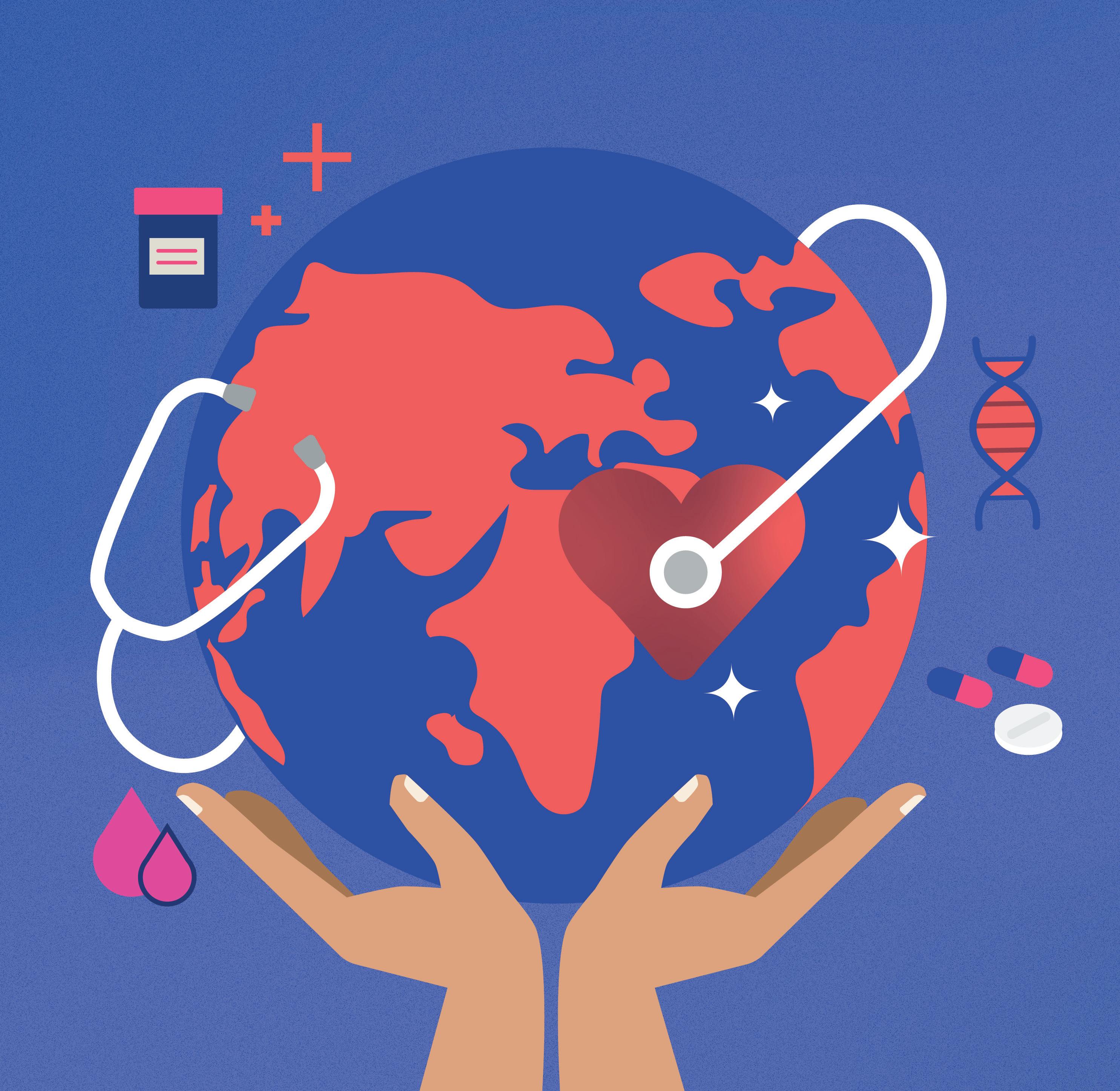
Laetitia

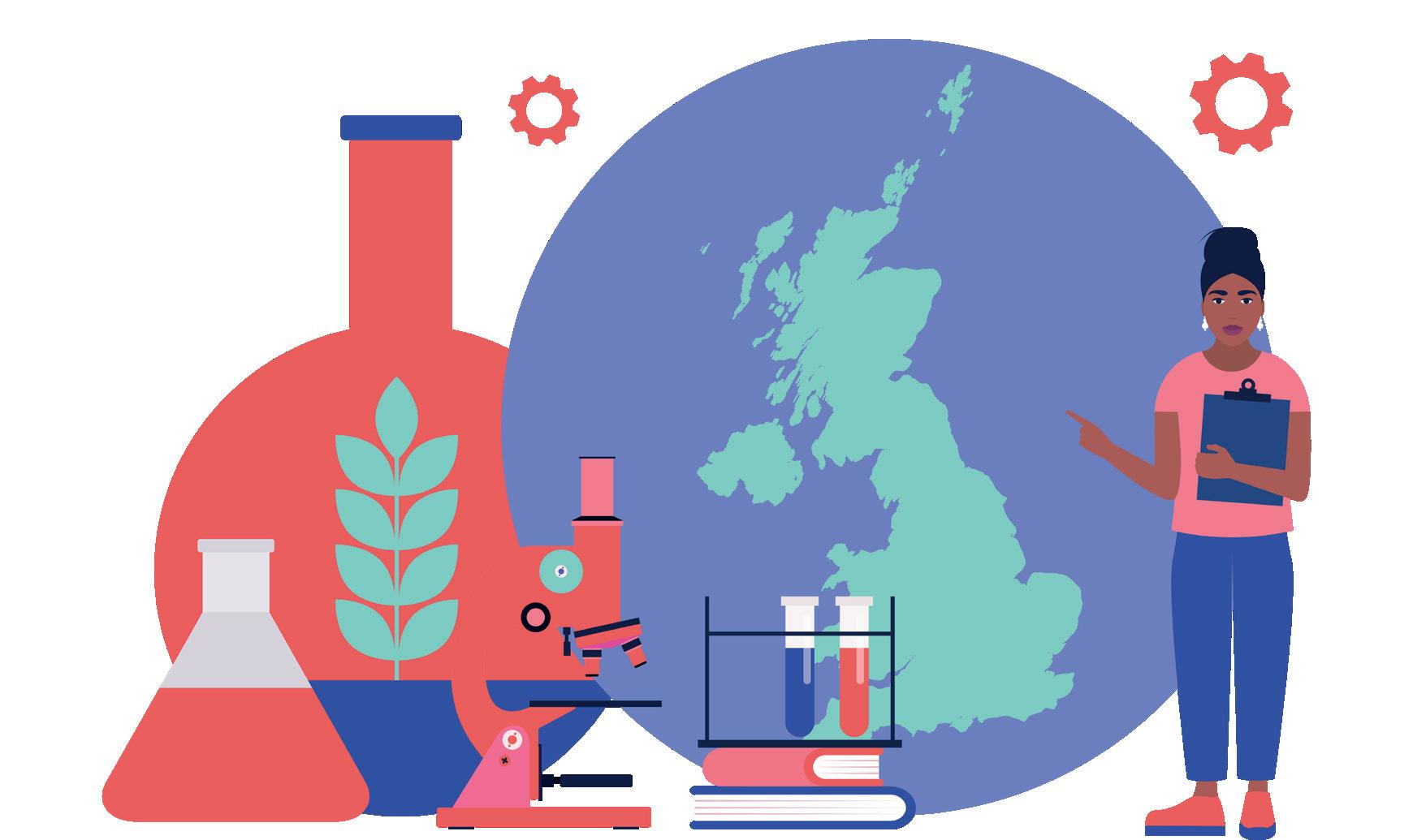
Why the UK’s global health investments matter more than ever
For two decades, the UK has shaped some of the most consequential advances in global health.
Investments in the Global Fund to Fight AIDS, Tuberculosis and Malaria, as well as Gavi, the Vaccine Alliance have not only saved lives but built a lasting impact: faster response times to disease outbreaks, more equitable access to innovation and greater country ownership as economies grow.
Turning UK-led innovation into global and local protection UK leadership is delivering real returns. A promising tuberculosis (TB) vaccine candidate, initially developed by GSK, is now in a late-stage clinical trial, sponsored by the Gates Medical Research Institute and co-funded by Wellcome and the Gates Foundation.
Now is the time to finish the job
With its depth in life sciences and legacy of leadership, the UK is uniquely positioned to drive the next phase of global health progress. The upcoming Global Fund replenishment, co-hosted by the UK and South Africa, is a pivotal moment to match our collective ambition for scientific discovery with investments in delivery — all while ensuring the UK remains a leader in shaping a safer, more resilient world.
With its depth in life sciences and legacy of
Long-acting HIV prevention, shaped by British-led research, could transform how the world prevents infections. UK-backed malaria vaccines are already reaching millions of children through Gavi. When mpox cases began to rise, Gavi was able to act swiftly — thanks in part to the UK’s ongoing support — deploying vaccines to high-risk countries and limiting the global spread of the virus.
However, this progress is precarious. Around the world, preventable diseases like cholera and measles are resurging. In the UK, TB rates are climbing.1 As the climate warms, mosquitoes that can carry diseases like malaria and dengue are spreading to new areas, bringing potential risks closer to even our shores here in Britain.2 Moreover, antimicrobial resistance looms as the next silent pandemic.
These threats know no borders. Continued UK investment in global health is not only the right thing to do; it is a frontline defence for health security at home. Without sustained support, progress risks stalling and hard-won gains could be lost, leaving communities vulnerable both abroad and here at home.
The economics are also compelling. One analysis suggests that UK investment in global health R&D could generate nearly £7.7 billion in domestic economic activity and support thousands of jobs.3 In an era of tighter budgets, investments that deliver dual impact — saving lives and creating value — are more important than ever. Encouragingly, the UK’s recent Spending Review reaffirmed support for critical partners including Gavi, the Global Fund and the World Health Organization. The science is stronger than ever. The delivery platforms exist. What’s needed now is sustained commitment to turn potential into protection and innovation into impact.
References:
1. GOV.UK. UK Health Security Agency. 2025. With tuberculosis (TB) on the rise again, how can we prevent further spread?
2. Bawden, A. 2025. Climate change could bring insect-borne tropical diseases to UK, scientists warn.
3. Impact Global Health. 2025. A stronger and safer United Kingdom through global health R&D investment.


The adoption of the Pandemic Agreement at the World Health Assembly represents a momentous step forward, but will not, by itself, stop future pandemics.
~Dr Richard Hatchett, CEO of the Coalition for Epidemic Preparedness Innovations (CEPI)
Antimicrobial resistance threatens treatment progress and the lives of cancer patients
A cancer advocacy group warns that data relating to antimicrobial infections (AMI) in cancer patients is being underrecorded in hospitals across Europe.

Cancer Patients Europe (CPE) believes the risk posed by antimicrobial resistance (AMR) in cancer care is being overlooked and that the cause of death in cancer sufferers often fails to reflect the fact that an antibiotic resistant-related infection killed them rather than their underlying condition.
Infection risk
CPE’s CEO Antonella Cardone says: “AMR is a priority for us because it is significantly impacting cancer patients; data shows that 50% of all cancer deaths are due to antibioticresistant infections, which could not be treated.”
She adds: “We cannot ignore this, and the situation is worsening to the point that, as cancer treatments impact the immune system of individuals, there is the risk that soon the use of traditional cancer treatments like chemotherapy will be compromised due to the infection risk.”
CPE — a pan-European patient organisation with 70 members from 29 countries and working on research, advocacy and delivering a united voice for the cancer community in Europe — highlights further data suggesting that cancer patients are up to three times more at risk of developing an infection compared to patients without cancer.
AMR data capture
Cardone and leading oncologists fear that such high levels of infection risk could undermine innovations such as CAR
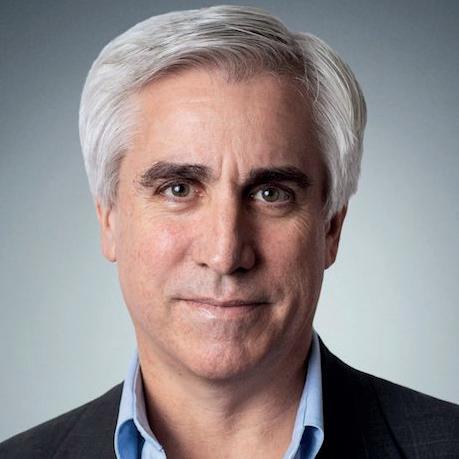
T-cell therapy and other immunotherapies. An additional concern is a lack of capture of AMR as a cause of death; when an oncology patient suffers an AMR-related death, the cause is still often recorded as cancer-related.
“This is because when people enter the hospital or a treatment pathway, they enter as cancer patients. When they die, the death is recorded as cancer rather than considering that the reason that caused the death in the end was the infection,” she adds.
“We strongly believe that if this alarming data were shown in hospital records, there would be greater attention to the topic of AMR and to the urgent need to take decisive actions by policymakers.”
Emotional burden
There is also an overlooked AMR-associated emotional burden impacting patients and families as they go through their challenging cancer treatment journey. “The risk of an infection puts a huge psychological burden on patients and families because they then tend to isolate themselves,” she says. “They avoid going to work or having a social life, but this is a vicious circle because people become depressed, which aggravates the entire situation.”
To help address this, we want more attention to be given to the prevention of infections, identifying novel effective antibiotics, as well as making them accessible to all those patients who need them most.
Biotech investment aims to tackle global AMR crisis
Policymakers have been warned that a USD1 billion fund to support development of new antibiotics is only a ‘temporary stopgap’ while urgently awaiting more robust marketsolutions to take place.
Agroundbreaking fund is helping support smaller biotech firms in the race to develop antibiotics to combat antimicrobial resistance (AMR).
Funding for AMR solutions
The AMR Action Fund is investing USD1 billion in companies that are developing urgently needed antibiotics targeting bacteria and fungi that the World Health Organization has deemed a priority because of the significant morbidity and mortality they bring.
However, CEO Henry Skinner warns that the fund is only “a partial and temporary stopgap” to the problem and is “buying time” for policymakers to deliver more permanent market solutions.
Developing promising antibiotics
With AMR being one of the world’s leading health challenges, new antibiotics are desperately needed to treat superbugs. However, due to a lack of return on investment, investors have
abandoned this area, and the pipeline of treatments is almost dry.
He explains: “Our focus is on supporting companies that are developing the most promising antibiotics in terms of potential public health benefit while raising the attention and informing policymakers on the need to change how antibiotics are valued so that upon the expiration of the Fund, other investors will support innovation to address the accelerating AMR challenge. Our goal is to support these companies, so they can obtain approval for two to four new antibiotics by 2030.”
Raising financial investment
Under the current system, a drug’s value is determined by its sales volume. That model works well in other therapeutic areas, but it is not the case with antibiotics.
“Antibiotics are not big moneymakers,” Skinner continues. “They deliver incredible value to society, cure infections and enable a wide range
of modern medical procedures like surgery, chemotherapy and organ transplants. While that’s good for public health, this critical contribution is not reflected in terms of patients’ access, which limits antibiotics’ clinical contribution and commercial potential, with investors fleeing to more financially rewarding and commercially viable areas.”
It is, he adds, a broken market that makes it exceedingly difficult for small and mid-size biotechnology companies to raise the necessary financing to advance antibiotics development.
Proper policies
Figures1 show how investors favour other areas. For example, between 2011–20, venture capital funding for US oncology companies totalled USD26.5 billion, but only USD1.6 billion for antibiotics. He warns: “Investors will continue to avoid antibiotics until policymakers enact meaningful policies that incentivise investment into antibiotic R&D, reward successful innovation and reflect the true valuecontribution of antibiotics.”
While the AMR Action Fund is investing in promising companies until policymakers enact market solutions, that will not continue forever. Acknowledging that the UK and Italy are exceptions, Skinner states there must be longer-term solutions with “proper policies in place to make a real difference,” leading to the development of novel antibiotics.
Reference:
1. Biotechnology Innovation Organization. 2022. The State of Innovation in Antibacterial Therapeutics.

INTERVIEW WITH Antonella Cardone CEO, Cancer Patients Europe
WRITTEN BY Mark Nicholls
INTERVIEW WITH Henry Skinner PhD CEO, AMR Action Fund
WRITTEN BY Mark Nicholls
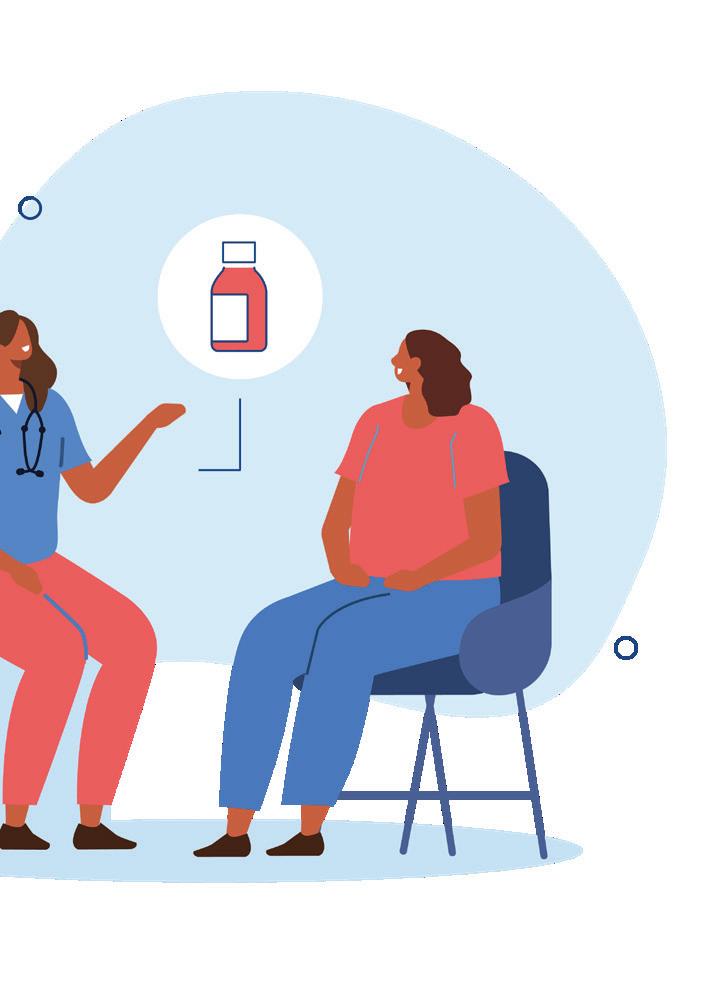

Novel antibiotics are failing to reach patients: here’s why and what needs to change
A leading expert voices highly cautious optimism over the very few steps taken today that could help tackle the threat to patients’ lives and their medical care from antimicrobial resistance (AMR).

With AMR contributing to millions of deaths and costing the global economy billions of dollars, Najy Alsayed, Head of Infectious Diseases at Menarini emphasises the urgency in fighting the AMR threat, where microorganisms develop resistance to antimicrobial medicines. While warning that the model to produce novel antibiotics is broken, we continue to work with authorities on implementing potential solutions, should the political awareness be translated into decisive actions.
AMR threat
Menarini is a mid-sized European pharmaceutical company focusing on oncology, cardiovascular and respiratory and infectious diseases. Alsayed sees three major elements to the AMR threat: life-threatening clinical impact; associated rising healthcare costs; and a threat to the future progress of modern medicine. Pointing to a 2019 paper in The Lancet which showed 4.95 million annual AMR deaths globally (a figure which could rise to 38.5 million by 2050), he adds: “We must take decisive actions to curb this accelerating threat.”

Healthcare-associated costs of USD66 billion a year are projected to rise to USD1.2 trillion by 2050, but he is particularly concerned
about the impact on patients. In one example, he fears that half of organ transplant patients will be affected by an AMR-related infection due to their immunocompromised systems, and 30–40% of these patients will die as a result.
Broken model
At present, he believes there is a “broken model” against tackling AMR, with constraints on the availability of novel antibiotics to clinicians and patients. Of 16 antibiotics approved in the last decade, only two are available in high-income countries, with access further limited in low and middleincome countries.
“That access is constrained because of the failure of the current model,” says Alsayed, pointing to development costs and little investment, meaning novel antibiotics are becoming not commercially viable in many countries and to the patients who need them the most, even in countries where these antibiotics have already been launched.
Lessons can be learned from how the orphan diseases crisis has been successfully addressed over the past 25 years. Facing similar challenges to novel antibiotics, with poor patient access, commercial viability and sustainability — alongside lack of investments attractivity — the action taken, through the designated Orphan Medicine EU-Legislation, has led to
significantly improved patient access, pipeline and investments, boosting orphan medicines for patients with rare diseases.
Emerging solution
Another positive step comes from the Italian reserved antibiotics model, announced during the G7 meeting in June 2024. It acknowledged the “significant and accelerating threat of AMR and the need for novel antibiotics.” Under this, Italian policymakers and government created an antibiotic patient access model through which novel antibiotics will be “evaluated, priced and reimbursed” and “patient access will be facilitated accordingly.”
We must take decisive actions to curb this accelerating threat.
He also highlighted that RDTs (rapid diagnostic tests) are important in ensuring novel antibiotics are promptly and appropriately delivered to patients. With pharmaceutical companies like Menarini collaborating with biotech companies, he believes that through the collaborative efforts and partnerships — alongside governments and EU policymakers, pharma industry, patient associations and other key AMR stakeholders — decisive solutions will emerge to address both the current broken model and patient access failures.
WRITTEN BY
Mark Nicholls
The power of vaccines to reduce the impact of chronic diseases
Chronic diseases are on the rise. Vaccines can help reduce the impact on people, health systems and society. This year’s UN High-level Meeting on NCDs and Mental Health provides an opportunity to maximise vaccine benefits.

WRITTEN BY Laetitia Bigger Director, Vaccines Policy, The International Federation of Pharmaceutical Manufacturers and Associations (IFPMA)
Non-communicable diseases (NCDs), such as cancer, cardiovascular disease, chronic respiratory diseases and diabetes, are the leading cause of ill health and death worldwide. Rising costs associated with long-term chronic diseases and ageing populations place mounting pressure on healthcare systems.
Vaccines reduce burden of chronic conditions
While vaccines are primarily used to prevent infectious diseases, they also have a critical role to play in reducing the burden of chronic conditions. This year, the UN General Assembly is set to agree on global efforts to tackle NCDs. This is an important opportunity to refocus attention on delivering cost-effective interventions to prevent, treat and control NCDs — including the role that vaccines can play.
Vaccines protect people, health systems and society
Effective immunisation campaigns can reduce the impact of NCDs on people living with these conditions and help build resilient, prevention-first health systems:
• Vaccines against diseases such as typhoid, diphtheria and Hepatitis A can prevent infections, reducing inflammation and protecting the brain from long-term damage and dementia.
• Vaccines can lower the risk of developing cancer. For instance, the human papillomavirus (HPV) vaccine is highly effective in preventing cervical cancer. Similarly, the Hepatitis B vaccine reduces liver cancer. Together, vaccination against HPV and Hepatitis B could prevent over 1
million cancer cases worldwide every year.1
• People living with chronic conditions are at higher risk of severe illness, hospitalisation and death from respiratory infections, such as Covid-19, influenza, pneumococcal disease and respiratory syncytial virus (RSV). Vaccines can help by reducing these risks. For example, influenza vaccination in people with cardiovascular diseases may reduce the risk of death from stroke by 50%2 and from heart attack by 45%.3
Cost-effective vaccines can ease pressures
Vaccines are also cost-effective. An analysis across 10 high and middle-income countries showed that comprehensive adult immunisation programmes can yield up to a 19 times return on their investment for society.4
Immunisation programmes that include vaccine recommendations for people living with chronic conditions can help prevent avoidable illness, complications and potentially irreversible chronic disease progression. They will also ease pressures on health systems, reducing hospitalisations, long-term medical interventions and loss of productivity.
References:
1. de Martel, C. et al. The Lancet Global Health, Volume 8, Issue 2, e180 - e190. Global burden of cancer attributable to infections in 2018: a worldwide incidence analysis.
2. Zahhar, Jalal A et al. 2024. Influenza vaccine effect on risk of stroke occurrence: a systematic review and meta-analysis. Frontiers in neurology vol. 14 1324677.
3. Zangiabadian, Moein et al. 2020. Protective effect of influenza vaccination on cardiovascular diseases: a systematic review and meta-analysis. Scientific reports vol. 10,1 20656.
4. IFPMA. 2024. The Socio-Economic Value of Adult Immunisation Programmes.
From labs to lives: turning malaria vaccine research into impact
The availability of malaria vaccines is a historic breakthrough in the fight against a disease that remains a leading cause of death in young children, especially in sub-Saharan Africa.

Malaria vaccines are being deployed in subSaharan African countries, bringing fresh hope for protecting children’s health and preventing needless deaths. However, significant implementation challenges must be overcome to fully realise their potential.
Improving vaccine uptake and delivery in West and Central Africa

We often see vaccine availability as the finish line, but it’s just another beginning. A major challenge lies in ensuring that these life-saving innovations reach children who need them most. To tackle this challenge, the OPT-MVAC partnership aims to support implementation research in 14 West and Central African countries with high seasonal transmission.
European Vaccine Initiative (EVI) and seven collaborating institutions will provide financial and technical assistance to national immunisation, pharmacovigilance and malaria programmes in monitoring vaccine uptake, understanding barriers to vaccination, strengthening communication and tailoring distribution strategies to local needs. Additionally, it will facilitate the sharing of best practices while leveraging opportunities to improve the delivery of other vaccines and health interventions along the way.
Culturally sensitive education and outreach
For all vaccines, and especially those designed to protect vulnerable groups such as children and pregnant women, early engagement with communities and stakeholders is
crucial. An ethnographic study* conducted in 2024 and led by EVI and Malawi University of Science and Technology (MUST), explored cultural beliefs and practices surrounding pregnancy, placental malaria and vaccination.
The research team carried out focus groups and 300 surveys among men, women and traditional birth attendants in 10 villages in the Southern region of Malawi, representing a mix of rural and semi-urban populations. Beyond formal meetings, engagement often took on a more immersive form. Research goes far beyond data collection; it involves building relationships founded on mutual respect and understanding. Cultural factors, such as language, traditions and the nuanced interaction between societal norms and healthcare practices, play a vital role in vaccine acceptance. Misinformation and vaccine hesitancy, often fuelled by historical distrust, pose significant barriers to vaccine acceptance. Successful rollout of new vaccines requires culturally sensitive education and adapted outreach efforts.
Global vaccine development collaboration
The fight against malaria benefits from diverse perspectives and continued innovation. Global collaboration in vaccine development and delivery is both a moral imperative and an investment in global health security. By working together, engaging local communities from the outset and strengthening national research capacity, we can turn the tide against malaria and move closer to a world free of this deadly disease.
*Ethnographic study in Malawi research received support from Directorate-General for International Cooperation of the Netherlands (DGIS).

Irina Nkumama
WRITTEN BY Romina Di Marzo Senior Communication & Advocacy Manager, European Vaccine Initiative

The role of innovation in building resilient healthcare systems
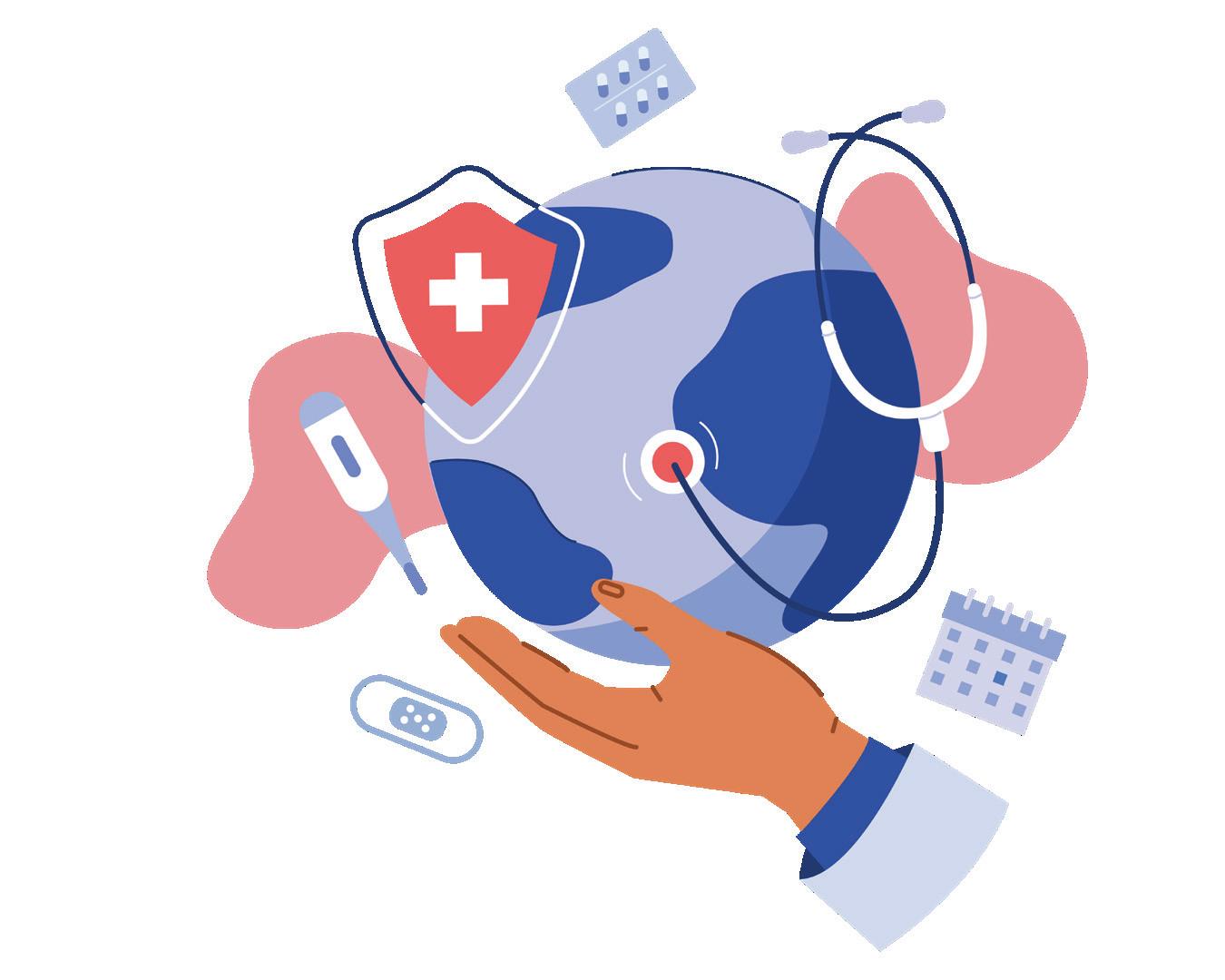
Building the resilience and sustainability of health systems is not a new goal for the European Union (EU) and national governments. However, the Covid-19 pandemic was an eye-opener globally on the urgency to better equip healthcare systems for public health threats.
Despite health being a national competence for EU member states, the pandemic instigated fresh ambition for a coordinated approach. The adoption of the ‘European Health Union’ by the European Commission in 2020 elevated health as an EU priority in its own right. Additionally, the European Health Emergency Response Authority (HERA) was established, a new European Commission department focusing on crisis preparedness and response.
Innovation can improve disease prevention, accelerate personalised medicine, and facilitate access to care. Research conducted by EIT Health’s Think Tank spotlights a constructive path forward for EU policy action to drive sustainable healthcare systems through innovation.
Health system organisation
Through strategic investments, the EU can assist member states in building workforce capacity and skills. Public-private collaborations will become the norm. In 2023 EIT Health was selected as the coordinator of the Skills Partnership for the European Health Industry, an industry-led Pact for Skills in healthcare. Pact for Skills is a public-private collaboration to attract new talent and support the existing workforce through reskilling and upskilling initiatives to strengthen the sector’s resilience.
Data and technology
The pandemic highlighted the immediate need for transformative technologies to support public health, with the role of data emerging as a key enabler to innovation.
A core building block of the European Health Union is the European Health Data Space (EHDS). This is a data-sharing infrastructure framework designed to give patients across Europe control over their own digital health information, including when they travel within Europe. The EHDS will also make large anonymised datasets available for research, innovation, and policymaking. This is the first of 14 common data spaces put forward in Europe’s Data
Strategy (2020), which creates conditions for a single market for data.
Policy and funding
The renewed momentum for innovation in health post-pandemic is advancing policies set to make health systems more agile, and better equipped to handle future crises. EU policy frameworks to facilitate this include the EU’s AI Act (2024), the forthcoming Critical Medicines Act, Biotech Act, and Cybersecurity Strategy.
The pandemic highlighted the immediate need for transformative technologies to support public health.
Additionally, the EU4Health Programme invests €5.3 billion into innovations focused on developing more resilient healthcare systems.
Overall, there has been a coordinated focus on health system resilience, met with policy initiatives, within Europe in recent years. Innovation has been recognised as a fundamental value to develop agile and sustainable systems for our future.

WRITTEN BY
Murray
Can we beat the next pandemic in 100 days?
Covid-19 vaccines were made in record time, but this still wasn’t fast enough. Speeding up vaccine development to 100 days could better prepare the world for the next outbreak.
The Covid-19 pandemic is fading into history. Yet, the threat posed by infectious diseases has not receded. Outbreaks have been simmering, or surging, worldwide. The changing climate, conflict and reduced investment in global health and disease surveillance create conditions for new diseases to spill over into human populations and spread worldwide. Outbreaks and pandemics will occur. This is certain. We have an opportunity to prepare now, leveraging advances in the biological sciences, information technology and AI to build a safer, fairer world better prepared for such threats. The adoption of the Pandemic Agreement at the World Health Assembly represents a momentous step forward, but will not, by itself, stop future pandemics.
Collaboration and speed can save lives
During Covid-19, scientists, the private sector, governments and regulators working together reduced the time required to develop a safe and effective vaccine from many years to just 326 days. Yet, that wasn’t fast enough. Millions of lives were lost, the world endured lockdowns that imposed massive social costs, and the economy ground to a halt.
Every day counts in an outbreak, so CEPI’s goal is to accelerate this process and create vaccines against new pandemic threats in as little as 100 days.
Modellers at Imperial College estimate that had vaccines been delivered in 100 days during the Covid-19 pandemic, they could have saved an additional 8 million lives and averted $14.3 trillion of economic damage globally. The greatest benefits would have been felt in the Global South.
Getting pandemic ready
Achieving this 100 Days Mission will require a paradigm shift in the way we develop vaccines. We must frontload research and build partnerships before a viral threat emerges.
Much of this work, in fact, has started – but it will take sustained investment, political commitment and unprecedented scientific collaboration to be ‘pandemic ready.’ The next Disease X can strike at any point, but we have the tools to stop it in its tracks, if we choose to.

To beat AMR, strengthen health systems — not just research funding
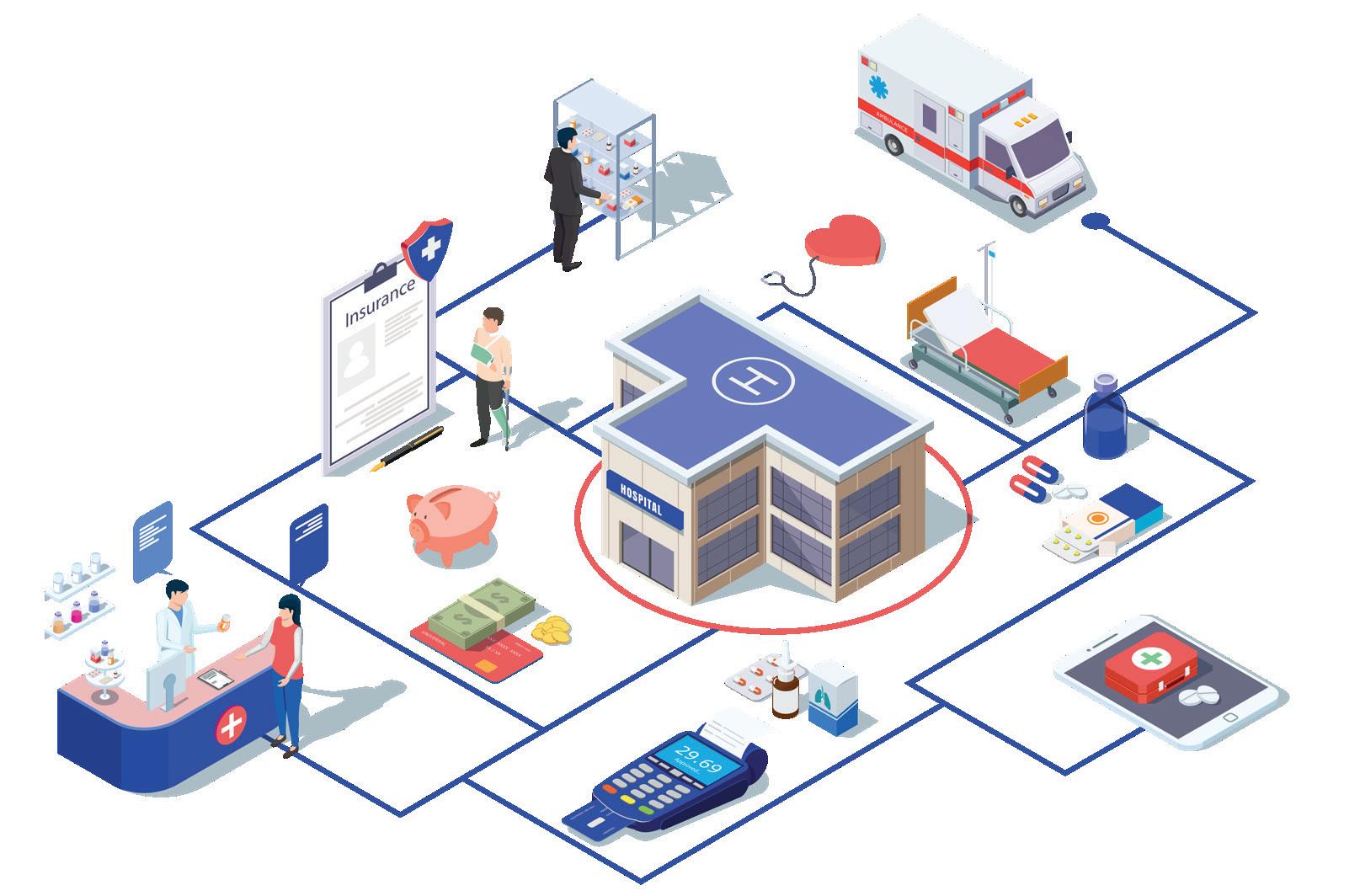
Antimicrobial resistance (AMR) demands more than vertical responses. Learn why lasting solutions require health system strengthening, bold governance reform across health, agriculture and environment and sustained global action beyond isolated interventions.
AMR lurks below, without us knowing when it will render treatment obsolete, nor how fast it will be transmitted. As a global health community, we are confronted by numerous threats to human health and even human existence every decade. When these are particularly worrying, we tend to reshape our global health architecture to organise the response.
Funding, research and implementation of the response start to take on a vertical perspective; to galvanise attention, especially from donors; attempt to incentivise; tailor innovation; and organise swift emergency response and vaccine campaigns. Indeed, it allows us to work nimbly within what is otherwise often a slow and bureaucratic environment. This is crucial for tackling outbreaks and any health-related emergency.
Resistance to antimicrobials is one of the most alarming issues we face today, and our response over the past decade has been very much a vertical one.
Why AMR demands systemic action
WRITTEN BY Dr Richard Hatchett CEO of the Coalition for Epidemic Preparedness Innovations (CEPI)
Resistance to antimicrobials is one of the most alarming issues we face today, and our response over the past decade has been very much a vertical one. This has allowed for considerable basic research on antimicrobial resistance (AMR) and to improve awareness amongst global leaders (thanks in large part to the UK). We have also seen major global efforts such as the Global Action Plan on AMR and the completion of a National Action Plan on AMR by almost all countries.
However, given the slow pace of implementation of plans globally and, in particular, prevention of infection, access to even basic antimicrobials
(which is essential for stewardship) and governance of use, one must ask whether our downward vertical response to AMR has not reached its limits, similar to what we previously experienced with HIV/AIDS and malaria. Indeed, like these two diseases, action on the ground requires a systemic response. Progress does not happen by parachuting in independent efforts and even resources.
Essential reform strategies against resistance
Further, since resistance comes about against all anti-infectives — and hence disrupts our treatment strategies across all infectious diseases — it does not lend itself to isolated, discreet solutions. Again, essential reforms like the banning of antimicrobials as growth promoters in agriculture, countering over-the-counter sales and building infrastructure to support good hygiene (eg. latrines, clean drinking water sources) and laboratory diagnosis are unlikely to be achieved in bursts of energy and funding. Rather, these are efforts that require longterm political support and resource allocation.
Strengthen systems, not silos
In sum, while crises such as AMR do require targeted research initiatives, tailored funding streams to develop urgently needed prevention and treatment technologies like vaccines, diagnostics and anti-infectives, our approach on the ground must not be led vertically. We must tackle these through robust health system strengthening and bold governance improvements.


WRITTEN BY Prof Holger Rohde University Medical Center
Hamburg Eppendorf, ESCMID AMR Action Subcommittee
